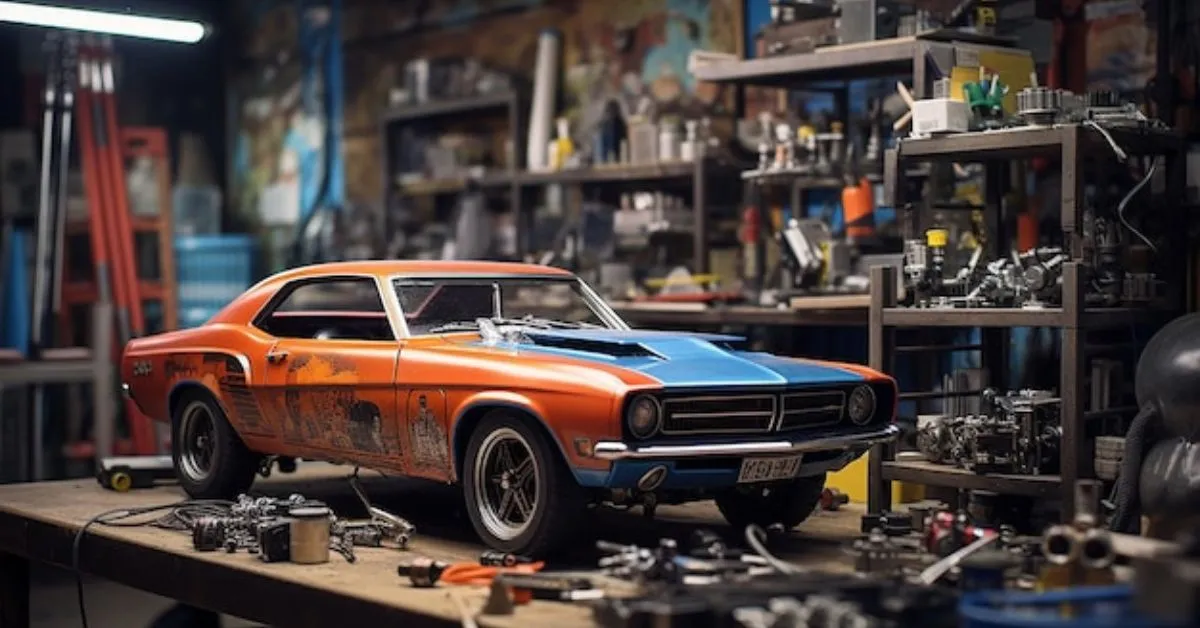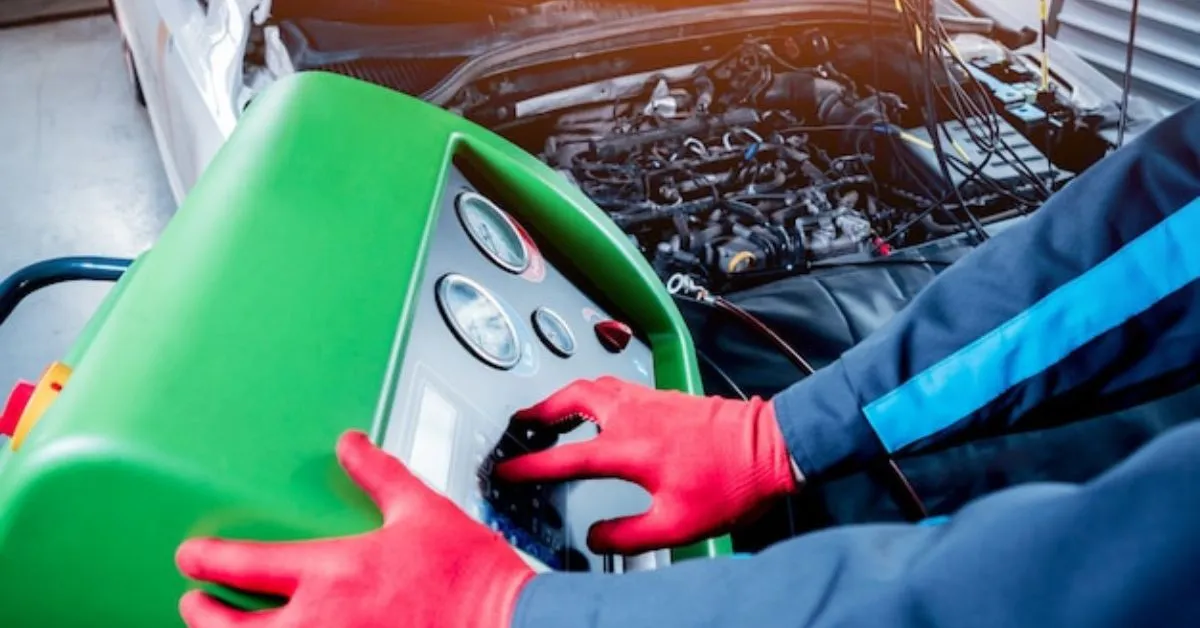Automotive
Civil Car Coverage: Understanding the Importance of Insurance

In the realm of automotive insurance, one term that often arises is “civil car coverage.” This type of coverage is crucial for protecting drivers and their vehicles against a wide range of risks and liabilities. From accidents on the road to unforeseen events like theft or vandalism, it provides financial security and peace of mind for car owners. In this comprehensive guide, we will delve into the intricacies of civil car coverage, exploring its components, benefits, and why it’s essential for every driver.
Understanding Civil Car Coverage:
Civil car coverage, also known as comprehensive coverage, is a type of auto insurance that goes beyond the basic requirements mandated by law. While liability insurance is typically required by law to cover damages or injuries caused to others in an accident, civil car coverage extends protection to the policyholder’s own vehicle for damages not caused by a collision.
Unlike collision coverage, which specifically covers damages resulting from accidents with other vehicles or objects, civil car coverage encompasses a broader range of risks and perils. This can include theft, vandalism, fire, natural disasters, falling objects, and more. Essentially, civil car coverage provides financial protection for a vehicle against non-collision related incidents that could result in costly repairs or replacement.
Components of Civil Car Coverage:
It typically consists of several key components, each offering protection against specific risks and perils. While the exact coverage may vary depending on the insurance provider and policy terms, common components of civil car coverage include:
- Collision Coverage: This component covers damages to your vehicle resulting from collisions with other vehicles or objects, regardless of fault. It helps pay for repairs or replacement of your vehicle in the event of an accident.
- Comprehensive Coverage: Comprehensive coverage extends protection to your vehicle for damages caused by non-collision related incidents such as theft, vandalism, fire, natural disasters, falling objects, and more. It provides financial compensation for repairing or replacing your vehicle in these situations.
- Uninsured/Underinsured Motorist Coverage: This component protects you if you’re involved in an accident with a driver who doesn’t have insurance or doesn’t have enough insurance to cover your damages. It helps pay for medical expenses, lost wages, and vehicle repairs if you’re hit by an uninsured or underinsured driver.
- Personal Injury Protection (PIP): PIP coverage pays for medical expenses, lost wages, and other related costs for you and your passengers regardless of who is at fault in an accident. It provides additional financial protection beyond traditional health insurance.
- Medical Payments Coverage: Similar to PIP, medical payments coverage reimburses you for medical expenses resulting from injuries sustained in an accident, regardless of fault. It can help cover ambulance fees, hospital bills, and other medical costs.
- Rental Reimbursement Coverage: Rental reimbursement coverage helps pay for the cost of renting a vehicle while your car is being repaired or replaced due to a covered loss. It ensures you have alternative transportation during the repair process.
Benefits of Civil Car Coverage:
Opting for civil car coverage offers several benefits for car owners, including:
- Financial Protection: It provides financial security by covering the cost of repairing or replacing your vehicle in the event of various non-collision related incidents. This can help alleviate the financial burden of unexpected expenses and prevent out-of-pocket costs for repairs.
- Peace of Mind: Knowing that your vehicle is protected against a wide range of risks and perils can provide peace of mind while driving. Whether it’s protection against theft, vandalism, or natural disasters, it offers reassurance that you’re prepared for unforeseen circumstances.
- Legal Compliance: While liability insurance is typically required by law in most states, civil car coverage is not mandatory. However, having comprehensive coverage ensures you’re adequately protected against a broader range of risks, helping you comply with legal requirements and avoid potential penalties.
- Coverage for Non-Collision Related Incidents: Unlike collision coverage, which only covers damages resulting from accidents with other vehicles or objects, It extends protection to a variety of non-collision related incidents. This includes theft, vandalism, fire, natural disasters, and more, ensuring comprehensive protection for your vehicle.
- Flexibility and Customization: It can be tailored to suit your specific needs and budget. Insurance providers offer various coverage options and deductible levels, allowing you to customize your policy to align with your preferences and financial situation.
Conclusion:
Civil car coverage is an essential component of auto insurance, offering comprehensive protection for drivers and their vehicles against a wide range of risks and perils. From accidents on the road to unforeseen events like theft or vandalism, comprehensive coverage provides financial security and peace of mind for car owners. By understanding the components and benefits of it, drivers can make informed decisions when selecting an insurance policy and ensure they’re adequately protected against the unexpected. Whether it’s safeguarding against collisions or non-collision related incidents, civil car coverage plays a vital role in protecting both vehicles and their owners on the road.
Automotive
R34 Reverie: Unveiling the Legendary Speed of the GT-R’s Quarter-Mile Triumph

Few names are as revered and admired in the world of automotive perfection as the Nissan Skyline GT-R series. Of these, experts and enthusiasts alike regard the R34 GT-R as the pinnacle of performance engineering. This automotive icon’s ability to dominate the quarter-mile with unmatched speed and grace is one of its most amazing achievements. This article explores the capabilities of the R34 GT-R, looking at its lightning-fast quarter-mile times and the technical wonders that enable its incredible acceleration.
A Legacy of Performance:
The R34 GT-R is not merely a car; it is a legend on wheels. Born from the lineage of Nissan’s Skyline GT-R series, it inherited a rich legacy of performance and innovation. Since its inception, each iteration of the GT-R has pushed the boundaries of automotive excellence, and the R34 is no exception. Equipped with cutting-edge technology and a relentless spirit, it emerged as the quintessential sports car of its era, captivating drivers with its raw power and precision handling.
Unleashing Unrivaled Acceleration:
At the heart of the R34 GT-R’s prowess lies its formidable acceleration capabilities. In tests conducted by automotive publications, this legendary machine has consistently stunned onlookers with its lightning-fast quarter-mile times. Clocking an astonishing 12.2 seconds over a distance of 402 meters from a standing start, the R34 GT-R showcases acceleration that borders on the surreal. It is a testament to the meticulous engineering and relentless pursuit of performance excellence that define the essence of the GT-R lineage.
Engineering Marvels:
What sets the R34 GT-R apart from its peers is not just its raw speed, but the intricate engineering marvels that enable such blistering performance. Central to its prowess is the ATTESA E-TS Pro all-wheel-drive system, a technological masterpiece that ensures optimal power delivery to all four wheels, maximizing traction and stability. Combined with the Super-HICAS four-wheel steering system, the R34 GT-R achieves unparalleled agility and cornering prowess, allowing drivers to carve through corners with surgical precision.
The heart of the beast lies beneath the hood, where the RB26DETT engine roars to life with unbridled ferocity. Renowned for its robustness and power potential, this twin-turbocharged inline-six powerplant is the epitome of automotive engineering excellence. With advanced features such as ceramic turbochargers and individual throttle bodies, it delivers relentless acceleration and a spine-tingling exhaust note that resonates with the soul of every driving enthusiast.
The Perfect Balance:
What truly sets the R34 GT-R apart is its ability to strike the perfect balance between raw power and refined precision. Unlike some of its contemporaries, which sacrifice usability for sheer brute force, the R34 GT-R excels in both realms. Whether tearing up the racetrack or navigating the urban jungle, it remains composed and controllable, instilling confidence in the driver with every twist of the throttle.
The Legacy Lives On:
Though the R34 GT-R has long ceased production, its legacy continues to reverberate through the automotive world. Enthusiasts flock to auctions and collectors’ garages in search of these rare gems, eager to experience the thrill of driving a true icon. Meanwhile, modern iterations of the GT-R lineage carry forth the torch of performance excellence, incorporating the latest advancements in technology and engineering to push the boundaries of what’s possible on four wheels.
Conclusion:
In the annals of automotive history, few cars have left as indelible a mark as the Nissan R34 GT-R. With its blistering acceleration and unmatched agility, it stands as a testament to the ingenuity and passion of the engineers who brought it to life. Though its production may have ceased, its spirit lives on in the hearts of enthusiasts around the globe, inspiring future generations to chase their dreams of speed and precision. As we reflect on its quarter-mile triumphs, we are reminded that true greatness knows no bounds – it simply accelerates towards the horizon, leaving a trail of awe and admiration in its wake.
Automotive
What are the Benefits of Dry and Wet Liners in Engine Performance?

When it comes to the performance and longevity of an engine, the choice of liners can significantly impact its efficiency and durability. Liners, also known as cylinder sleeves, are cylindrical components inserted into the engine block to provide a smooth surface for the piston to move up and down. Two common types of liners used in engines are dry liners and wet liners, each offering distinct advantages in terms of performance and maintenance. This article explores the benefits of both dry and wet liners and their impact on engine performance.
Enhanced Cooling and Heat Dissipation with Wet Liners:
Wet liners, also called wet sleeves, are installed within the engine block and come in direct contact with the engine coolant. One of the primary advantages of wet liners is their ability to enhance cooling efficiency and dissipate heat more effectively than dry liners. Since wet liners are surrounded by coolant, they help regulate the engine’s temperature, preventing overheating and reducing the risk of thermal stress on critical components. The efficient cooling provided by wet liners contributes to improved engine performance and longevity, making them an ideal choice for high-performance and heavy-duty applications.
Moreover, the contact with coolant ensures that heat generated during engine operation is efficiently transferred away from sensitive components, thereby reducing the likelihood of thermal degradation. This is particularly advantageous in applications where engines are subjected to prolonged periods of high load or operating in extreme environmental conditions.
Ease of Replacement and Maintenance with Wet Liners:
Another benefit of wet liners is their ease of replacement and maintenance. In the event of liner wear or damage, wet liners can be removed and replaced without requiring extensive disassembly of the engine block. This simplifies maintenance procedures and reduces downtime, allowing for quicker repairs and minimal disruption to operations. Additionally, since wet liners are not directly machined into the engine block, they can be replaced individually without affecting its integrity, saving time and resources in the long run.
Moreover, the convenient replaceability of wet liners amplifies their appropriateness for scenarios where expeditious turnaround times for maintenance and repairs are paramount. This is particularly evident in commercial transportation and industrial machinery sectors, where swift and efficient maintenance procedures are indispensable.
Reduced Friction and Wear with Dry Liners:
Dry liners, also known as dry sleeves, are installed directly into the engine block without coming into contact with coolant. Unlike wet liners, dry liners rely on the lubrication provided by engine oil for friction reduction and wear protection. One of the key benefits of dry liners is their ability to minimise friction between the piston rings and cylinder walls, resulting in improved fuel efficiency and reduced wear on engine components. The reduced friction dry liners also contribute to smoother engine operation and prolonged service life.
Moreover, dry liners provide superior resistance against corrosion and chemical degradation due to their insulation from the corrosive elements present in engine coolant. This characteristic renders them exceptionally well-suited for engines functioning in hostile environments or utilising alternative fuel sources, which might expedite the deterioration of engine components.
Increased Stability and Rigidity with Dry Liners:
Dry liners offer increased stability and rigidity compared to wet liners, thanks to their direct integration into the engine block. By providing a solid foundation for the piston to move within, dry liners help minimise vibrations and noise, leading to smoother engine performance and enhanced driving comfort. Additionally, the inherent stability of dry liners helps maintain optimal piston-to-cylinder clearance, ensuring consistent combustion and maximising engine efficiency. Overall, the structural integrity offered by dry liners makes them a preferred choice for engines operating under high-stress conditions.
The inherent stability of dry liners also enhances their suitability for applications where precise engine control and consistent performance are critical, such as motorsports and aerospace propulsion systems.
Weight Reduction with Dry Liners:
Weight reduction through dry liners is a notable advantage in engine design compared to wet liners. This is primarily due to eliminating the necessity for additional coolant passages and sealing mechanisms within the engine block. The significance of this weight reduction is particularly emphasised in industries where even minor savings are crucial, such as automotive racing and aerospace propulsion systems.
The adoption of dry liners not only contributes to weight reduction but also has a ripple effect on various performance aspects of vehicles. Dry liners facilitate a streamlined engine design by eliminating the need for additional coolant passages and sealing mechanisms, resulting in enhanced acceleration, improved handling, and increased fuel efficiency. These collective benefits are pivotal in optimising the overall performance of vehicles in demanding environments like automotive racing circuits and aerospace applications.
Customisation and Performance Optimisation:
Dry liners and wet liners each offer unique advantages tailored to meet the specific requirements of the engine and its intended use. Wet liners excel in applications requiring superior cooling and thermal management, such as heavy-duty trucks, industrial machinery, and marine vessels. On the other hand, dry liners, such as high-performance racing engines and automotive aftermarket upgrades, are preferred in applications prioritising reduced friction, increased stability, and ease of maintenance. The versatility and adaptability inherent in both liners empower engine designers and manufacturers to customise their designs effectively, catering to the diverse and specific demands across various industries and applications.
Moreover, advancements in liner materials and manufacturing processes have led to enhanced performance and customisation options. Engine builders can now choose from various materials, including cast iron, aluminium, and composite materials, to optimise liner performance for specific applications. Additionally, innovations such as liner coatings and surface treatments enhance performance characteristics such as friction reduction, wear resistance, and thermal conductivity, allowing for further customisation and performance optimisation.
Conclusion:
The difference between dry and wet liners should be cleared as they profoundly influence engine performance, efficiency, and maintenance. Wet liners excel in cooling and replacement ease, ideal for critical thermal management needs. Conversely, dry liners reduce friction, boost stability, and simplify maintenance, fitting high-performance engines and prioritising precision and reliability. Understanding these liner types empowers engine designers and operators to optimise engine performance and longevity wisely.
Automotive
Revving Up the Search: The Digital Showcase of Pre-Owned Trucks in Temecula

In the picturesque city of Temecula, where the rolling vineyards meet the bustling streets, the quest for a reliable pre-owned truck takes a modern turn. Dealerships have embraced the digital frontier to project their inventories of used trucks, creating a seamless bridge between potential buyers and their next investment. This digital transformation is not just about listing vehicles online; it’s a comprehensive strategy designed to cater to the nuanced needs of today’s consumers. Now, to explore how this digital approach is reshaping the search Used trucks for sale in temecula.
The Virtual Showroom: A New Era of Exploration
Gone are the days when the search for a used truck required physical visits to multiple dealerships. Today, virtual showrooms offer panoramic views of available trucks, complete with high-resolution images and detailed videos. This digital display lets buyers peruse the inventory at their convenience, offering a thorough inspection from the comfort of their homes. Each listing is a digital dossier, providing information including the truck’s history, specifications, and condition.
Tailored Searches: Precision at Your Fingertips
One of the most significant advantages of the online projection of used trucks is the ability to tailor searches to fit exact preferences. Potential buyers can filter their searches by make, model, price range, and numerous other criteria, efficiently narrowing down the options. This level of precision saves time and energy, directing buyers to trucks that meet their specific requirements and budget, making the search process more targeted and efficient.
Connectivity and Communication: Bridging the Gap
Digital platforms offer unparalleled connectivity, allowing potential buyers to communicate with dealers easily. Through online forms, chat services, and even virtual consultations, inquiries can be made, additional information requested, and appointments for test drives scheduled. This direct line of communication enhances the buying experience, making it more personalized and responsive. It’s a digital handshake that fosters trust and transparency between buyers and sellers.
Comprehensive Comparisons: Empowered Decisions
With the entire inventory of pre-owned trucks available online, buyers have the unique opportunity to conduct comprehensive comparisons without the need to visit multiple dealerships. This side-by-side evaluation of features, prices, and conditions empowers buyers to make informed decisions. It’s an analytical approach that ensures the chosen truck meets expectations and offers the best value within the budget constraints.
Online Reviews and Testimonials: The Trust Factor
In the digital era, the reputation of dealerships is often gauged through online reviews and testimonials. Prospective buyers can access a plethora of feedback from previous customers, gaining insights into the quality of trucks, customer service, and overall satisfaction. This collective wisdom serves as a guide, helping buyers identify dealerships known for their reliability and integrity. It’s a trust factor that significantly influences decision-making, ensuring investments are made confidently.
Financing and Deals: Navigating the Financials Online
The digital showcase extends beyond the trucks, offering a transparent view of financing options and special deals. Dealerships provide online calculators, financing applications, and detailed breakdowns of payment plans, making it easier for buyers to understand their financial commitments. This proactive approach demystifies the purchasing process, ensuring buyers are well-informed about their financing options and the overall cost of their investment.
Conclusion
The projection of Used trucks for sale in temecula through online platforms has revolutionized the search process, making it more accessible, efficient, and transparent. This digital evolution caters to the modern consumer’s expectations, offering a comprehensive and engaging buying experience. As potential buyers navigate this digital landscape, they are equipped with the tools and information needed to make well-informed decisions, ensuring their investment in a pre-owned truck brings satisfaction and value for years to come. In the quest for the perfect used truck, the digital showcase in Temecula stands as a beacon, guiding buyers to their ideal match in this vibrant and ever-evolving market.
-

 Technology8 months ago
Technology8 months ago社工库: Navigating the Depths of Social Engineering Databases
-

 News6 months ago
News6 months agoFinding the Truth Behind a Trails Carolina Death
-

 Education7 months ago
Education7 months agoFortiOS 7.2 – NSE4_FGT-7.2 Free Exam Questions [2023]
-

 Technology3 months ago
Technology3 months agoAmazon’s GPT-55X: A Revolutionary Leap in AI Technology
-

 History & Tradition9 months ago
History & Tradition9 months agoλιβαισ: Unraveling Its Mystique
-

 Education8 months ago
Education8 months agoExploring the Significance of 92career
-

 News8 months ago
News8 months agoClaudia Goldin: A Trailblazer in Understanding Gender Pay Gap
-

 Entertainment7 months ago
Entertainment7 months agoFree Tube Spot: Your Gateway to Endless Entertainment












